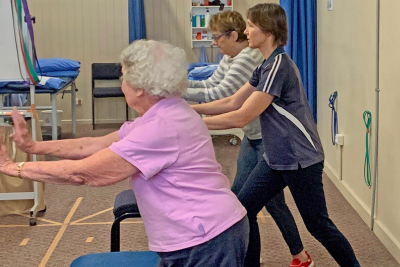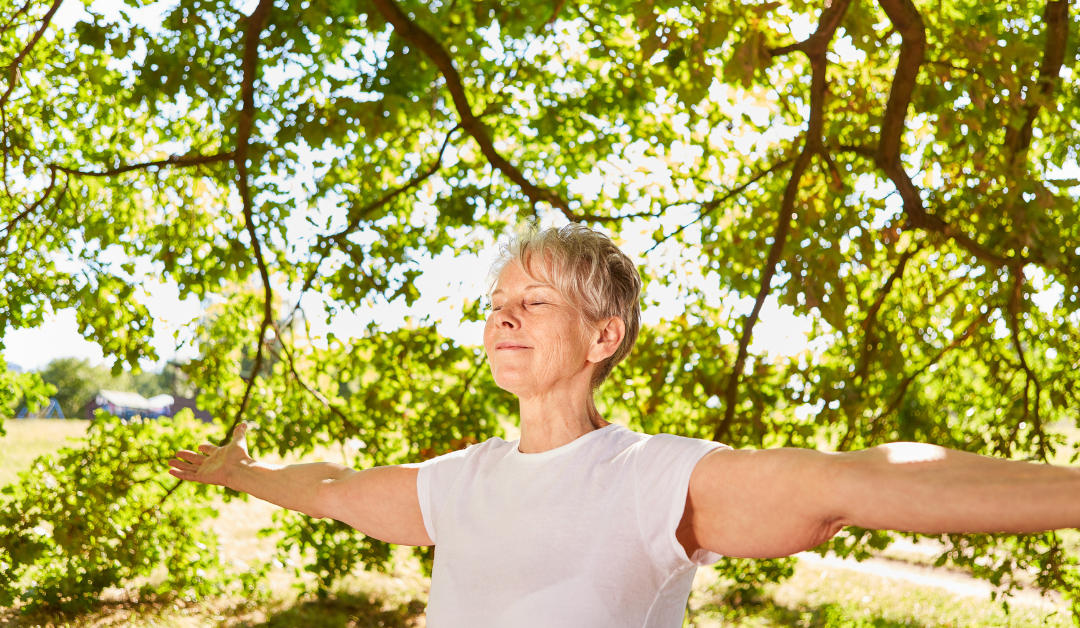This year, SPHC is once again proud to take part in ‘April No Falls’. This is a national and international campaign that aims to educate the public and raise awareness of falls prevention.
Balance and Stability are very important at any age, however the risks associated with an older person falling are much greater and they take much longer to recover.
We’d like to educate more people in the community about falls prevention, so that we can help those at risk of falling, stay on their feet and avoid injury!
And the good news is there are a range of balance exercises that you can do in your own home, or in a class setting, to do exactly this.
What are the Benefits of Balance Exercises for older adults?
A well designed balance exercise program for older adults can improve independence , their quality of life and prevent falls.
Exercises are designed to maintain your centre of gravity , improve posture and improve muscle reaction time and mobility. Improving balance is also known to improve brain function, memory and spatial cognition.
It is recommended that three or more hours a week is highly beneficial for seniors to really challenge their stability and improve their strength.
When should you start Balance exercises?
Being physically active throughout your life is very important and can certainly help your level of balance and strength as you get older.
In general, it is a good idea to start with specific balance exercises from around 50 years of age.
It’s so important that you are strong enough to maintain a level of balance, so that when you do have a trip or bump, you are well equipped to correct yourself and not fall over.
If you are exercising at home, it is a good idea to use a chair, or ensure another solid surface like a bench is nearby, in case you need to use it for support.
Ensure you have sturdy, supportive shoes on and there are no trip hazards, and even invite a family member or friend, with good balance, to be there to assist you.
If you have any of the following concerns, we recommend seeing a physiotherapist for a more specific balance exercise program and direct assistance through a Balance class.
- You have had a fall or near miss
- You use walking aids
- You regularly lose your balance and need to use an object to steady yourself
- You struggle with daily living activities like cooking and cleaning.

6 Simple Balance and Strength Exercises
The most important things to remember about a Balance exercise program is that you are consistent, starting with doing your exercises approx 10 mins per day and building up from there, and that the exercises need to be moderate to challenging to get the full benefit.
Here are 6 simple exercises that you can do at a time and place to suit you.
- Heel Toe walking – Start with the right foot in front of the left, then step your left foot forward in front of the right foot, putting weight on that heel first as you place down, then shift weight to the toes in a slow rolling motion. A more challenging variation would be to do this on a raised surface or beam.
- Heel Toe Raises – Stand up tall with feet together and using slow controlled movements, rock forwards onto the toes and back onto the heels. If it is too difficult, move your feet shoulder distance apart. As you progress, you can go faster and hold for a few seconds in each position.
- Tai Chi Arms -Sitting on a chair, with feet shoulder width apart and knees at 90 degrees, raise your arms across to one side and keep your shoulders loose and dropped. With gentle hands and wrists, face your top palm down, and bottom palm up, as you gently sweep across the body.
- Sit to stand – Using a chair behind you, stand with your feet shoulder width apart and cross your arms across your chest. Slowly squat down to a sitting position on the chair and then stand back up, with weight over both feet evenly. This can be progressed further by using a balance board.
- Balloon tennis – Sitting on a swiss ball, with your legs shoulder width apart and knees at 90 degrees, try to tap a balloon in the air several times. This is a great one to do with a friend!
- Clock stepping – Stand up straight, using support if needed, and picture yourself standing in the middle of a clock. Try to balance on one leg and tap the other foot out onto various positions of the clock, eg. 2 o’clock, 4 0’clock, 6 o’clock. You can also try this with stickers on the floor to guide you. Repeat on the other leg.
Balance Video
Here is one of our recent videos demonstrating some of those exercises listed above. These exercises are often incorporated into our Safe Step Balance classes.
SPHC Step Safe Balance Classes
Whilst a lot of people think that falls are a normal part of getting old, we know otherwise. Balance can be improved with Physiotherapy and Balance classes by focusing on improving ankle flexibility, increasing lower limb strength and challenging the body systems that control balance. Strengthening exercises reduce the risk of falls and the likelihood of fractures.
Our Step Safe Balance classes are 1hr in duration and run over an 8 week period. A Balance assessment is completed prior to starting the course. Classes include various balance specific exercises, and include walking, stepping, reaching, endurance, education and safety.
We currently run 3 Step Safe Balance classes on the following days –
- Tuesday – 11.15am and 12.15pm
- Thursday – 11am
To make an appointment please call us on 3869 1099 or Read More about our Step Safe Classes.
.

